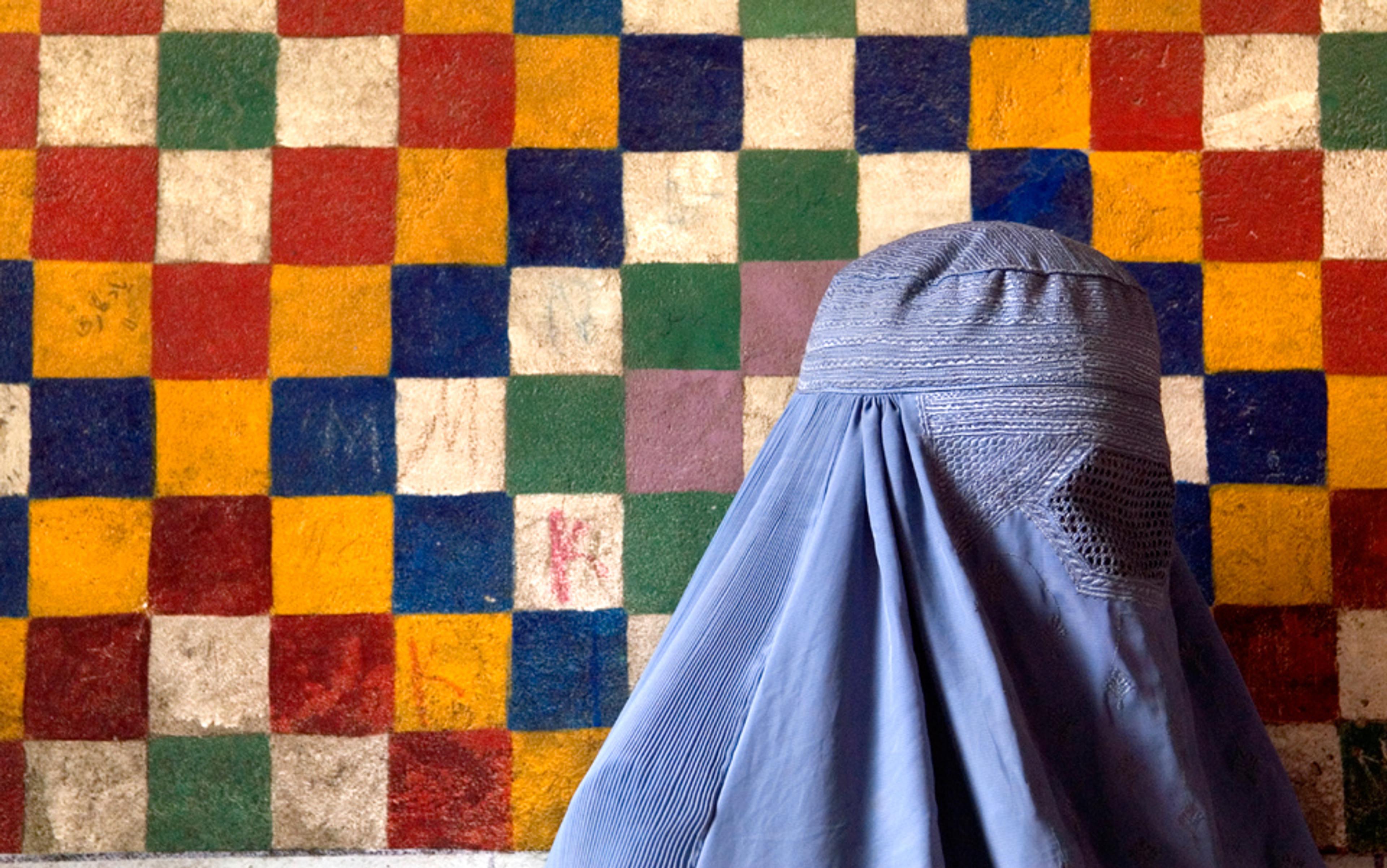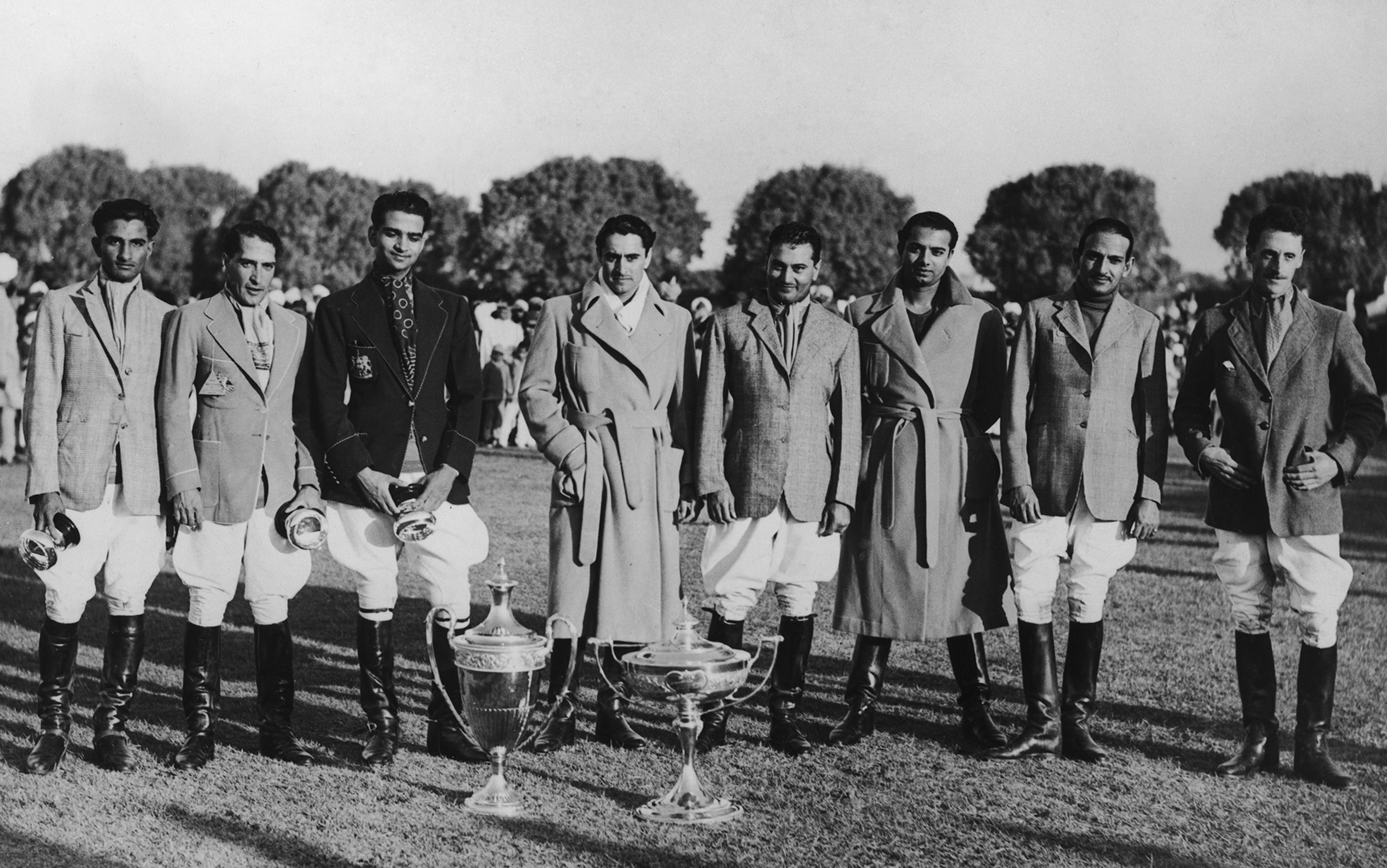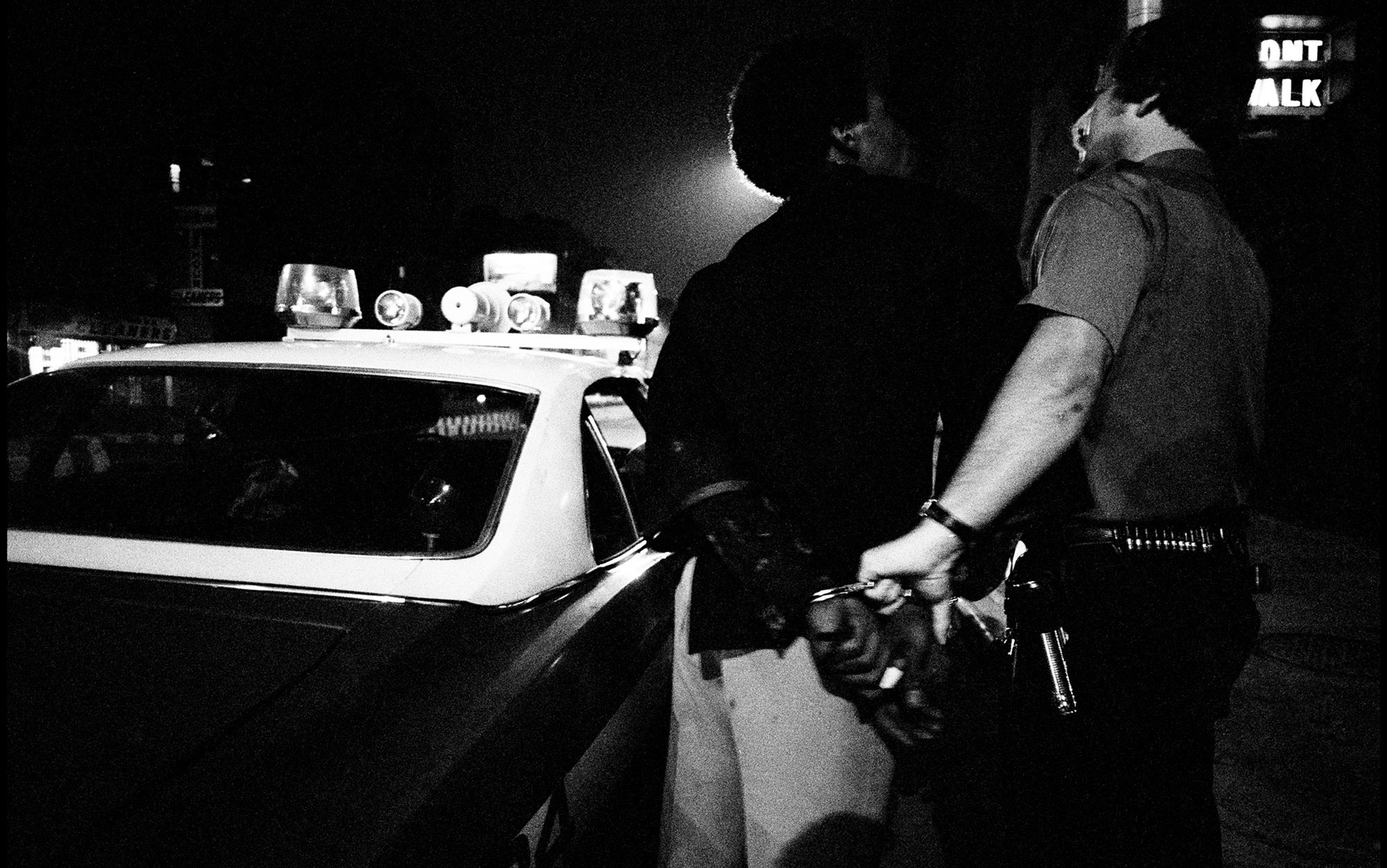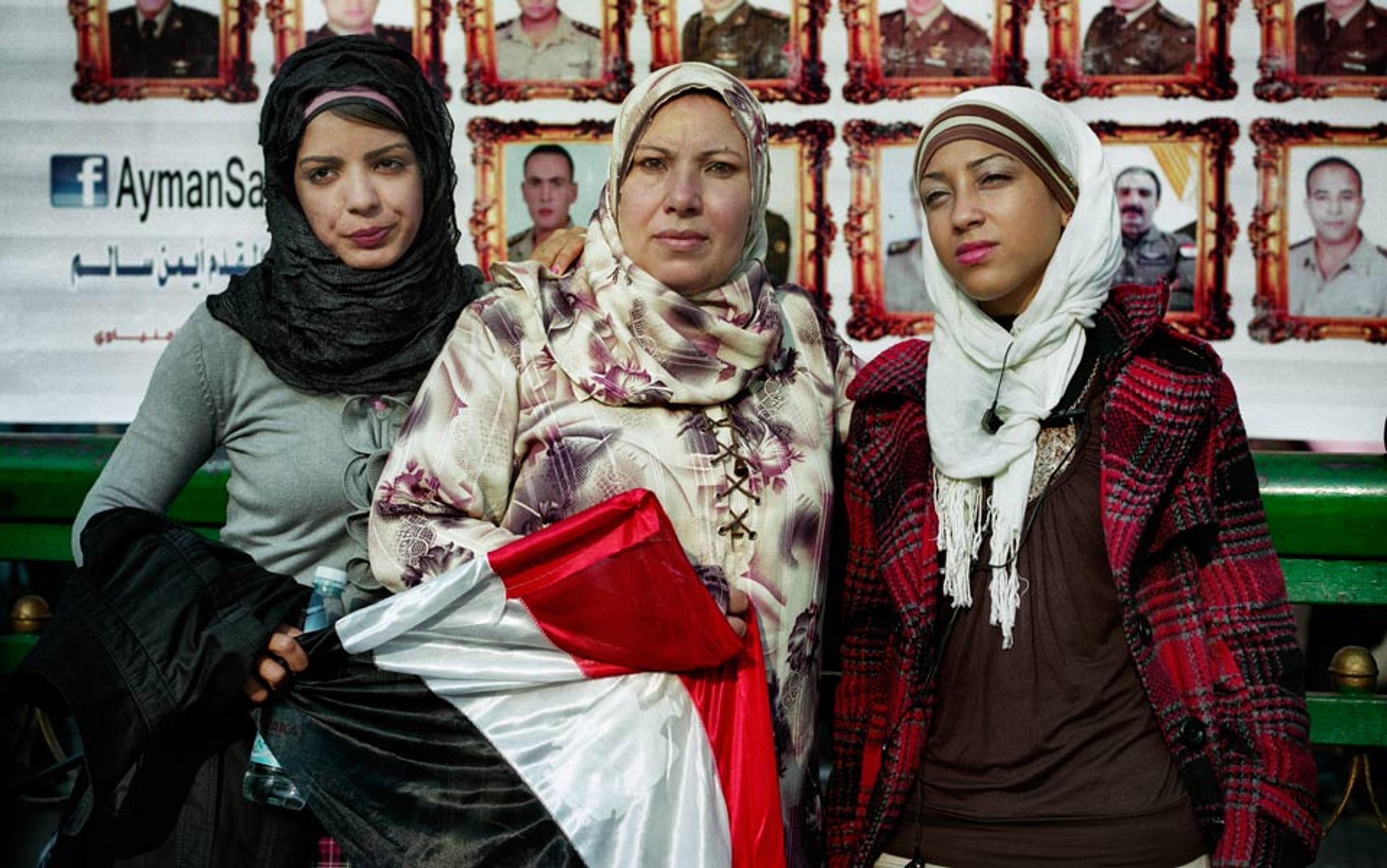In 1820, in the Indian city of Benares, an English Baptist missionary named Smith helped to save a woman from the Hindu practice of sati, the burning of widows. He described the scene: ‘As soon as the flames touched her, she jumped off the pile. Immediately the Brahmins seized her, in order to put her again into the flames: she exclaimed, “Do not murder me! I don’t wish to be burnt!” The Company Officers being present, she was brought home safely.’ A London magazine reported the heroic efforts of Britain’s East India Company under the headline ‘A Woman Delivered’. If there was one thing 19th-century Europeans knew about India, it was probably sati.
Mr Smith’s 1820 account of valiant British men rescuing an Indian woman from her husband’s funeral pyre is one of many such contemporary reports. The East India Company had just become the effective governing authority of India. As a trading presence, it had been uninterested in culture. As a ruling presence, it set out to reform the barbaric local customs.
More recently, it is Afghan women who’ve needed the Anglo-American empire to deliver them. In 2002, a coalition of Western women’s organisations sent an open letter to the US President George W Bush asking him to ‘to take emergency action to save the lives and secure the future of Afghan women’. Its signatories included Eleanor Smeal, President of the Feminist Majority Foundation in Virginia, together with other notable feminists such as Gloria Steinem, Eve Ensler, Meryl Streep and Susan Sarandon. US women overwhelmingly support the war, they noted, because it will ‘liberate Afghan women from abuse and oppression’.
In July 2004, three years into the invasion of Afghanistan, Bush announced victory: ‘Three years ago, the smallest displays of joy were outlawed. Women were beaten for wearing brightly coloured shoes. Today, we witness the rebirth of a vibrant Afghan culture.’ More recently, in March 2015, under the headline ‘The Thin Line of Defence Against Honour Killings’, The New York Times Magazine recounted the victory. ‘Faheema… was one of the lucky ones,’ wrote foreign correspondent Alissa Rubin, ‘she had made it to an emergency women’s shelter.’ The US-led war in Afghanistan had seen the construction of ‘about 20’ women’s shelters ‘almost entirely funded by Western donors’. ‘These shelters… are some of the most successful – and provocative – legacies of the Western presence in Afghanistan,’ reports Rubin, ‘demonstrating that women need protection from their families and can make their own choices.’
Ending sati or widow immolation in 19th-century India, and founding women’s shelters to protect women from honour killings in 21st-century Afghanistan: these campaigns bookend two centuries of Anglo-Americans standing squarely against horrific local customs. Specifically: protecting brown women from barbaric local customs. The 19th-century British Missionary Register and The New York Times Magazine of the 21st-century both tell urgent stories of Anglo-Americans as the fragile ‘thin line of defence’ protecting vulnerable local women.
In fact, more than a decade after President Bush celebrated their liberation and US feminists asked for the valiant campaign to continue, Afghan women are not free. Between 2012 and 2013, violence against women in Afghanistan increased by 25 per cent. US agencies entrusted with hundreds of millions of dollars for Afghan women are unable to say how they were used to empower them. Much has changed from the days of the East India Company to the more recent alliance between Bush and the Feminist Majority, but not everything: the Anglo-American representation of conquest as benevolence endures.
So why the particular focus on saving native women?
Do women, their freedom, their clothes and their marriages provide some crucial avenue into establishing hegemony, a method of representing the foreign invaders as good? The most compelling reason for this enquiry is that South Asian and Afghan feminisms are tainted by an imagined complicity with colonialism and imperialism. Making explicit just how aspects of women’s lives – their clothes and marriages – have been put into the service of Anglo-American imperial projects of domination, and how little these projects have had to do with those actual women, is a step towards lifting the weight of imperial complicity on Afghan feminism.
In the late 1870s, Annette Ackroyd, an unmarried British woman who shared her Unitarian father’s strong commitment to education, set off for Calcutta to start a school for Hindu girls. Everyone knew, from the British press, that Indian women lived in an abject state. Once in India, however, British racism shocked Ackroyd. ‘Let us sit on the verandah and get out of the natives,’ one woman said to her. Of her fellow Brits, she concluded: ‘How these sweet and feminine souls, whose sympathies are so tender, can be so destitute not only of humanity but of simple courtesy and consideration of the feelings of others, is a problem I cannot pretend to solve.’
However, Ackroyd’s sensitivity also found offence in Bengali women’s clothing. Saris, she thought, left Bengali women semi-nude: she found them vulgar and immodest. ‘There must be a decided change in their lower garments,’ she wrote. ‘They cannot go into public in such costumes.’ A well-to-do Bengali woman struck Ackroyd as a ‘savage who had never heard of dignity or modesty’ for the way she sat, and dressed ‘in red silk, no shoes, no stockings’.
For the Anglo missionaries who spread across 19th-century India, Indian women’s clothing became a consistent preoccupation. In the Indian state of Kerala, missionaries and the colonial administration found the fact that the women did not cover their breasts proof of immorality. ‘There is absolutely no faithfulness between husband and wife,’ concluded one early 19th-century observer.
for those who aspired to appear ‘civilised’, more like English women, the sexy sari gave way to long-sleeved blouses
Working together, Protestant missionaries and British colonial administrators urged women of the Nadar caste to wear longer, more ‘modest’ clothes. Anglo officials in India were especially concerned that native women who had converted to Christianity conceal their breasts.
What women wore, and when they wore it, often served as identifying markers in India’s notoriously complex cultural hierarchy. Women’s clothing could also signify religious status, as was the case, in Nadar culture, with long scarves and the covering of breasts. In 1813, Colonel John Munro, the British Prime Minister in Travancore, rescinded the order for Nadar women to cover their breasts with scarves. Instead, Anglo missionary women would make jackets for the Indian women. But the jackets proved unpopular. Nadar women preferred to cover themselves with a certain kind of scarf. That scarf, however, was reserved for upper-caste women, and so Nadar women’s use of it provoked another conflict. The flailing colonial administration issued another order, now requiring Nadar women to wear the unpopular jacket and actually forbidding them from wearing the scarf that the British had initially encouraged.
By the time of Indian independence in 1947, the British had enjoyed some success in transforming the way Indian women dressed. Especially for those who aspired to appear ‘civilised’, more like English women, the too-sexy sari gave way to long-sleeved blouses and petticoats. Indian women in such clothes also represented a visible recognition of British colonial authority, which was at once symbolic, intimate and public.
The more recent US-led war in Afghanistan also involves a special interest in South Asian women’s attire. The congresswoman Carolyn Maloney, a New York Democrat, dramatised the matter when, on 16 October 2001, she stood on the floor of the US House of Representatives in a blue burqa. ‘It’s hard to breathe,’ Maloney reported, ‘it’s particularly hard to see, there’s a mesh in front of the eyes and its like having 15 screen doors in front of you. It’s very demeaning, it’s as if you have no identity.’ Maloney wore the burqa to make a point, namely that this was the ‘just war that we [Americans] have no choice but to wage’.
For more than a decade, the blue burqa has been an emblem of female oppression in Afghanistan. Women’s resistance to the blue burqa regularly earns the US media’s celebration, and anyone who resists it is automatically anointed a heroine. In May 2015, The New York Times Magazine profiled Malina Suliman, an Afghan graffiti artist, describing her in the headline as someone who ‘risks her life to challenge the burqa under the Taliban’, while the other details of her life were deemed merely incidental.
In the West, some governments have banned the burqa. In May 2015, two days after the article on Suliman was published, the Dutch Parliament banned the burqa in public places. The Dutch Prime Minister Mark Rutte released a statement saying that ‘the ban was made with security in mind’. A year earlier, in July 2014, the EU Court of Human Rights upheld the French ban on the burqa, rejecting the arguments of a Muslim woman who said it contravened her freedom of choice.
Western feminists have aimed to give the matter an existential depth and air of authenticity. Here’s Rubin again, this time describing what it’s like to wear a burqa in Afghanistan for The New York Times Magazine in May 2011: ‘I felt rejected with my burqa down, like I was not good enough to be seen in public. I leaned in the back seat and felt a wash of passivity come over me. Nothing was demanded of me except silence.’
women’s clothing is a powerful shorthand for all that is wrong with native culture and all that must be corrected by the empire
Women’s freedom, when it comes to the burqa, means wearing what ‘the empire’ wants. Other commentators such as Maureen Dowd, writing in The New York Times Magazine in November 2001, express skepticism about the promotion of women’s rights as a pretext for war, saying: ‘it’s a freebie, an easy way to please [American] feminists who got mad when the administration ended funding for international family planning groups that support abortion’. But Dowd also stops short of actually cautioning against the use of supposedly feminist imperatives as a means to couch the desires of domination that undergird empire. She draws attention to the continued subjugation of Saudi women, a regime that the US is unwilling to criticise for sins similar to those of the Taliban, and instead ends with a line that seems to argue for its expansion: ‘Millions of Muslim women are still considered property. The first lady might think about extending her campaign beyond Afghanistan.’ Dowd’s qualm, then, is not the sly misuse of women’s causes as pretexts for war, but a wider use of them informed unapologetically by what the West thinks is best for the rest.
Whether it is the covering of breasts in Southern India or the wearing of burqas in Afghanistan, women’s comportment and clothing have offered an emotionally powerful shorthand for all that is wrong with native culture and all that must be corrected by the empire. Just as the covering or uncovering of breasts carried significance beyond what it meant to British imperial officials, the burqa was actually a fixture of Afghan life long before the Taliban. Afghan women’s rights activists have criticised the West’s obsession with the burqa. In 2001, the Revolutionary Association of the Women of Afghanistan stated that the end of the mandatory burqa ‘was in no way an indication of women’s rights and liberties in Afghanistan’. However, the thoughts of Afghan women about their lives have been less important in the West than burqa as a symbolic moral justification of war and imperial control.
For a colonising mission to have moral weight, it must appear to ‘better’ the lives of the colonised. The agents of empire, whether they are the officers of the British East India Company or US soldiers in Afghanistan, must believe in the incontrovertible rightness of their cause. Representing sati as emblematic of Indian society was tantamount to depicting Hindu men as barbaric and evil. What other kind of men would burn a widow? Hence, colonisation becomes a kind of moral vision protecting vulnerable Hindu women against evil Hindu men.
The reality, of course, was more complex. Sati was barbaric, but as British colonial officials well knew, some parts of India did not practise it at all; in other regions it was restricted to certain castes, while in others still it retained relative popularity. It hardly deserved to be the one thing most Europeans knew about India. But colonial officials promoted the British misperception that all Hindus were raised to consider the act as the ‘most meritorious in the world and of the utmost benefit to the spirit of the enactor and the souls of all her kindred’. Even in 1843 – 14 years after the legislative ban on the practice – colonial officials were told to publicise the ban widely, stress the inhumanity of sati, and hand down stern punishments to those who failed to prevent self-immolation.
Sati also appears in Jules Verne’s adventure Around the World in 80 Days (1873), whose protagonist Phileas Fogg encounters the practice as it is about to occur deep in the Indian forest. As his travel companion says to him: ‘Yes… burned alive. And, if she were not, you cannot conceive what treatment she would be obliged to submit from her relatives. They would shave off her hair, feed her on a scanty allowance of rice, treat her with contempt; she would be looked upon as an unclean creature, and would die in some corner, like a scurvy dog.’ However, all ends well in Verne’s book, when Fogg, by virtue of a clever plan enacted by his faithful servant Jean Passepartout, manages to rescue Princess Aouda.
the colonial concept of religion imposed its own mode of silencing on the very women it sought to protect
In the British colonial imagination, sati was a mysterious process, driven forward by a ‘religion’ and ‘culture’ as unalterable as gravity. Hindus were imagined as hypnotised by Brahmanic texts and hence incapable of disobeying them. This conception of Hindus, dominated by a scriptural Hinduism, was a British construction. It was the British who, in order to establish themselves as the rightful successors of the defeated Mughal Empire, ordered the mass translation of Vedic and Hindu texts and ordered their codification as ‘law’ to govern their Hindu subjects. In actuality, the British translations were often poor ones that, in addition, omitted key elements of Hindu cosmology that the British considered irrelevant to jurisprudence.
Testimonials from Hindu women call into question the religious basis of sati, and even suggest that the concerns of widows were predominantly material and social, and not religious. An abandonment of the colonial binary between the sacred and the secular, according to the India-born, US-based scholar Lata Mani, would have pointed to the practice as having a primarily material basis that was then given religious form through the officiating of priests and the recitation of religious verses. However, the colonial conception of religion as ‘the structuring principle’ of the Hindu society left no room for a wider consideration of the material hardship and social dimensions of widowhood. Hence the colonial regime imposed its own mode of silencing on the very women it sought to protect.
One month after Maloney stood in Congress in a burqa in 2001, the First Lady Laura Bush described the brutalities of the Taliban on Afghan women, calling on ‘civilised people throughout the world’ to join the effort ‘because in Afghanistan, we see the world the terrorists would like to impose on the rest of us’. Some White House employees and members of Congress wore swatches of fabric snipped from blue burqas to show their support. The US had found its civilising, missionary war cry.
Just as accounts of sati accompanied the British colonial project, in November 2001 a US Department of State report titled ‘The Taliban’s War Against Women’ accompanied Bush’s call to action. Just as the colonial ban on sati ultimately argued that the practice was not really required by Hindu scripture, so the US Department of State report took pains to establish that Islam itself did not require segregation or veiling or the banishment of women from public life. In 19th-century India or 21st-century Afghanistan, the operative, underlying Anglo presumption was that their colonial and imperial subjects were entirely programmed by their beliefs of scriptural authority.
Since the beginning of the 2001 call to war, tales of honour crimes – in which Afghan men kill wives, daughters and sisters who dare to disobey them – spun out of the Anglo media. In August 2010, nine years into the occupation, when critiques of the Afghan war were gaining traction, the cover of Time magazine featured a grotesquely mutilated Afghan girl, her nose cut off by a Taliban commander. Titled ‘What Happens If We Leave Afghanistan’, it told the story of 18-year-old Aisha, who had suffered this grotesque punishment for running away from abusive in-laws. Time’s story ended by noting that a US non-profit was insuring that Aisha would have reconstructive surgery. It looked as though the US and its people could fix everything, particularly the savagery of Afghan men.
The 19th-century British/Hindu sati-rescue narrative has thus reappeared in the 21st century as the American/Afghan honour-crime-saviour fantasy. It has been given due prominence in the US narrative on the war. One NPR account from 2012, titled ‘Facing Death, Afghan Girl Runs to US Military’, describes Lina, who said she’d run from her brothers because they were going to kill her after they’d found her with a cellphone. The story tells of the giddy delight of the rescued Afghan girl in the US military base, devouring ice cream and Doritos in the cafeteria, and quickly learning English from the movies (thanks to which ‘kiss was a favourite new word’). More drama arrives in the form of Afghan advisors who tell the US soldiers that Lina must be sent home to keep peace with the community. In the end, a compromise is reached when a women’s shelter in a different, larger Afghan city agrees to take her in.
the violence committed by men against women in Afghanistan has hundreds of thousands of counterparts in the US
As with sati narratives, honour-crime narratives rely on monolithic, prescriptive motivations disconnected from the social or material conditions of those involved. Much like the ‘problem Hindu’, the evil Afghan male stands in contrast to the persecuted Afghan female and is lazy, brutal, unfeeling. He is driven by a medieval moral code that endorses the persecution of women. This crude perspective takes the place of thinking about the more than 100,000 Afghan civilian casualties caused by the US invasion since 2001. Just as stories of rescuing Indian women from sati distracted from the violence of British colonialism, so focusing on the violence of honour-crime stories deflects attention from the raids, bombings, illegal and indefinite detentions, torture and general brutality of the US war in Afghanistan.
Any honest analysis of honour crimes in Afghanistan would have to begin by acknowledging a society whose familial and institutional structures have been broken by five decades of Soviet and US foreign intervention. That sort of honest analysis would also reveal that marital ‘choice’ is unavailable to nearly anyone, male or female, in Afghan society. It would explore marriage as a means of cementing frayed communal relations in a war-torn land rather than the romantic liaison available to affluent Westerners. Finally, it could also acknowledge that the intimate violence committed by men against women in Afghanistan has hundreds of thousands of counterparts committed by men against women in the US.
Instead, representing ‘honour killing’ as an exotic, gruesomely brutal, incomprehensible phenomenon driven by mysterious cultural imperatives makes the US occupation seem urgent and righteous, even heroic. Acknowledging that ‘honour killing’ in Afghanistan could be comparable to all the other crimes that men perpetuate against women everywhere else would cast into doubt one of the main moral edifices of the imperial endeavour. Like the 19th-century Indian Hindu sati, the 21st-century Afghan Muslim honour killings must be uniquely evil.
Both the British in India and the Americans in Afghanistan made women’s clothing and gender crimes into signatures of an alien and barbaric culture. Moral campaigns against such ‘offensive’ practices are in reality sophisticated imperial technologies of control. For populations ‘at home,’ bare-breasted Hindu women and burqa-clad Afghan women become convenient emblems of both strangeness and the need for corrective conquest. When the Hindu woman puts on a long-sleeved blouse and a petticoat, or when an Afghan woman throws off her burqa, it equals conquest and success of the colonial venture.
The singling out of gendered crimes, sati in India and honour killings in Afghanistan, dramatises the otherness of the Hindu or Afghan male. He becomes an indigenous evil requiring heroic foreign intervention. The sophistication of this kind of enemy-making is that it renders one half of the local population – the victims of these crimes – allies of the occupation. Actual Hindu widows and Afghan women are rarely, if ever, heard from, as their experiences and perspective might complicate a silence that the Anglo-American empire can imagine as gratitude.
To be effective, portraying imperial violence and occupation as a feminist intervention requires local cooperation from Indians or Afghans. Just as the British created a class of middlemen who furthered their reform projects and were eager to take on British clothing, education and even military service in the colonial army, the US has poured hundreds of millions of dollars into creating an NGO-based aid culture in Afghanistan. Monetarily dependent on the US, these NGOs accept and promote a perspective in which burqas and honour crimes are root problems of Afghan society.
The peculiar persistence of the Anglo empire’s preoccupation with women’s clothing and social roles reveals that domination cannot rely solely on battles and bombs. The popularisation of gross caricatures of native gender roles, in particular the passive, oppressed female, helps create popular support for the conquerers, and their enablers, as good and brave. In the process, a society’s moral basis is rebuilt to rationalise subjugation to the foreign power.






